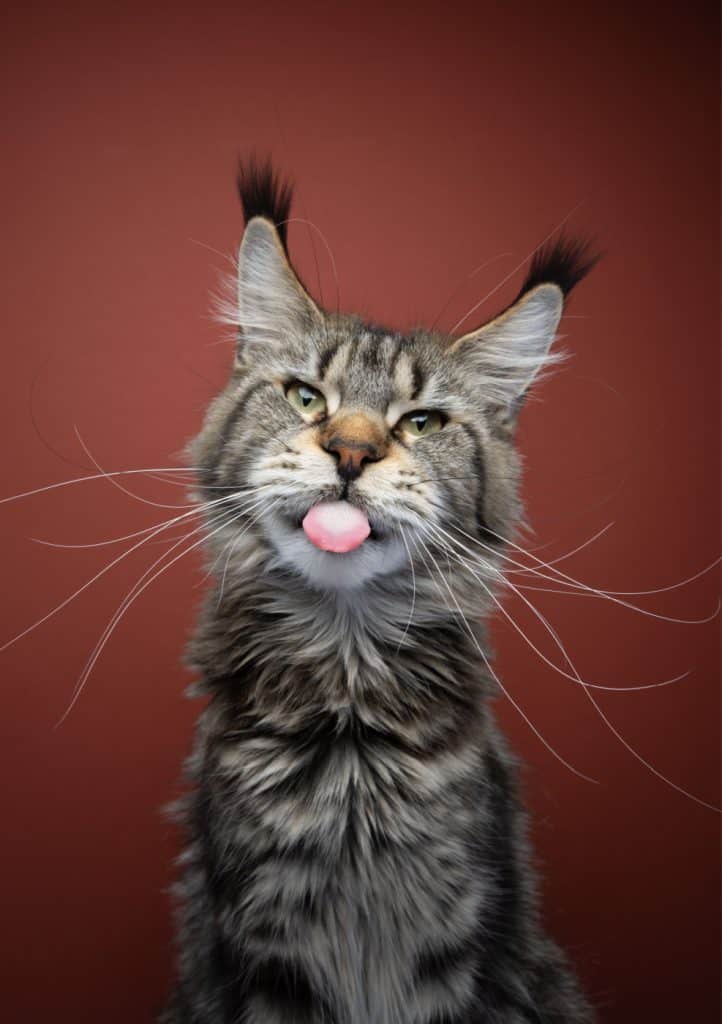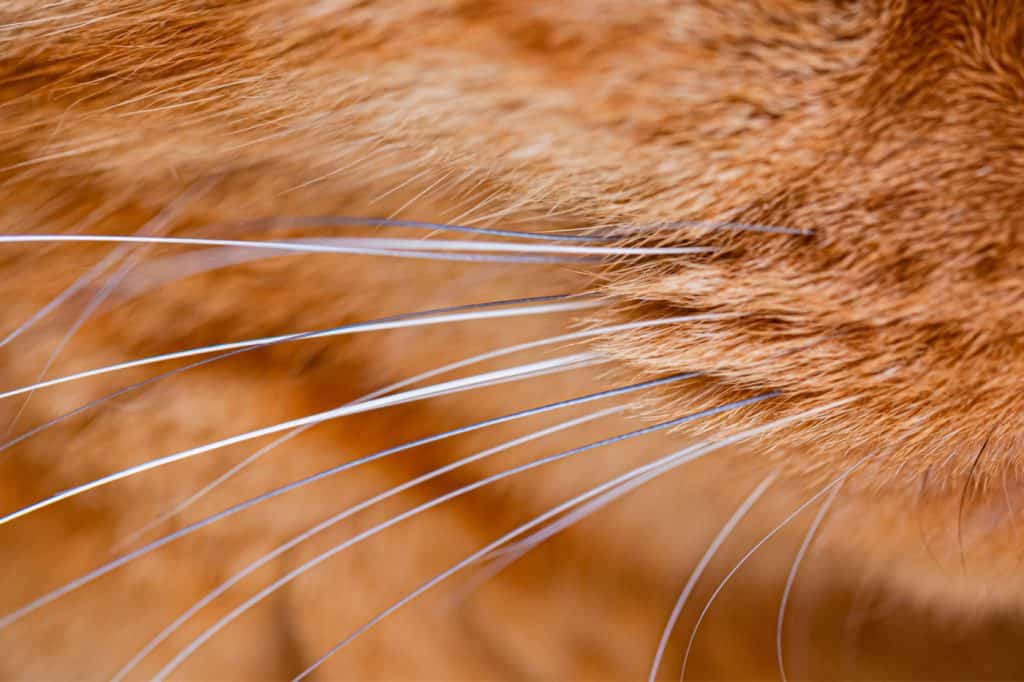Have you ever wondered what secrets are hidden within those delicate, quivering bristles that frame your cat's face?
Ever gazed over at your kitty and pondered what silent messages those whiskers are sending?
We're about to uncover 11 astonishing facts about your furry friend's whiskers — those enigmatic features you've admired but perhaps never fully understood.
Did you know that kittens are born with whiskers that serve as their first sensory touchpoint with the world? Or that whiskers can tell you a great deal about your cat's mood? Intrigued yet?
Let's dive in.

Whisker Wonder #1: The Sensory Powerhouse
Imagine having a sensory organ as receptive as your fingertips, but located on your face.
Incredible, isn't it?
Well, that's a day in the life of your cat! Whiskers, or vibrissae, are not just fancy hairs, they are power-packed sensory tools.
They're rooted much deeper than typical fur and are connected to a rich supply of nerves and blood vessels.
This makes them ultra-sensitive to the slightest changes in their surroundings, even detecting vibrations in the air.
So, when your furry friend brushes against you, it's not just a casual pat; it's a detailed analysis!
Whisker Wonder #2: The Feline GPS
Cats are natural-born explorers. Dark, narrow spaces or high, precarious ledges - nothing seems to deter them.
But have you ever wondered how they navigate so effortlessly, especially in the dark? The answer lies in those elegant bristles.
Their whiskers are so finely tuned that they can detect changes in air currents, allowing them to 'map out' their surroundings.
It's like having their own built-in GPS, enabling them to leap and bound with ease and accuracy.
Whisker Wonder #3: The Mood Indicator
As if whiskers weren't already fascinating enough, they are also mood mirrors, reflecting your cat's emotions.
A relaxed cat will have its whiskers slightly to the side, while a curious or interested cat will point its whiskers forward.
But if you see the whiskers pinned back against the face, be aware. It signals fear or aggression.
Just like humans use facial expressions, cats have their own unique way of communicating. So, the next time you're unsure about your cat's mood, just whisker-watch!

Whisker Wonder #4: The Guinness World Record
Believe it or not, there's a Guinness World Record for the longest cat whiskers, and it's held by a Finnish feline named Missi.
Her astonishing bristles measured a whopping 7.5 inches in length!
That's almost as long as an average human's hand.
This extraordinary kitty certainly proves that when it comes to whiskers, some cats truly go above and beyond.
Whisker Wonder #5: Born-Ready Kittens
Whiskers are so crucial to a cat's survival and well-being that kittens are born with them.
Before their eyes and ears fully open, these newborns rely heavily on their whiskers to navigate the world.
These tiny, sensitive bristles help them locate their mother, find their food, and avoid obstacles. It's like having a tiny guide on their faces!

Whisker Wonder #6: The Mysterious Whisker Trimming
Mother cats have been observed engaging in a peculiar behavior - they sometimes chew off their kittens' whiskers.
This act may sound concerning to us, but rest assured, it's a natural part of the feline world.
Scientists believe this behavior may serve to limit the kittens' exploratory instincts, keeping them safely near the nest.
Additionally, it could be a result of the mother cat's excessive grooming behavior, which is a sign of her care and attention.
In either case, kittens are not harmed by this temporary whisker loss.
Their fully functioning set of whiskers grows back in no time, preparing them for their upcoming adventures in the big, wide world.
Whisker Wonder #7: The Color-Changing Whiskers
Did you know that a cat's whiskers can change color over time? It may come as a surprise, but whisker color can vary based on factors like age, genetics, and even health conditions.
As cats grow older, their whiskers may turn white or gray, just like human hair. Some cats may even have whiskers that display multiple colors along their length!
This fascinating transformation not only adds to the unique charm of your feline friend but can also serve as a reminder of the passage of time and the deep bond you share with your cat.
So, keep an eye on your cat's whiskers and embrace the beauty of these ever-changing, magnificent sensory bristles!
Whisker Wonder #8: The Cycle of Shedding and Regrowth
Just like your cat's fur, whiskers too go through a cycle of shedding and regrowth.
It's perfectly normal for your cat to lose a whisker or two once in a while. They might take a few months to grow back but rest assured, they do reappear.
However, in older or sickly cats, regrowth may take a little longer. If you notice that your cat's whiskers aren't growing back, it might be a good time to consult with a vet.
Whisker Wonder #9: The Whisker Fatigue Phenomenon
Here's a curious thing about whiskers: they can experience fatigue.
Yes, you read that right! Whisker fatigue is a sensory overload that can happen when a cat's whiskers are constantly stimulated.
Signs of whisker fatigue include a reluctance to eat or drink from a bowl where the sides touch their whiskers.
The solution? A wider dish for your feline friend to dine from.
Whisker Wonder #10: Whiskers Are Found In Multiple Locations On Your Cat
Did you know that your cat's whiskers don't just reside on their upper lips?
They also have these sensitive structures above their eyes, on their chin, and even on the back of their front legs, known as carpal whiskers.
Each of these sets of whiskers plays a unique role in your cat's interaction with the world, from avoiding eye-level threats to navigating tight spaces or hunting prey.
It's a complex system that turns your kitty into a finely tuned sensor array on paws!

Whisker Wonder #11: You Should Never Trim Or Cut Your Cat's Whiskers - It Is Not A Haircut
Maintaining your cat's whisker health is a crucial part of their overall well-being.
Remember, never trim or pluck your cat's whiskers. It can be disorienting and stressful for them.
Provide a safe environment where their whiskers won't get damaged, and always check for any unusual changes during your regular grooming routine.
Your cat's whiskers are a marvel of nature - let's keep them that way!
Embracing the Wonders of Cat Whiskers
As we come to the end of our whiskered journey, it's clear that these humble hair-like structures are nothing short of miraculous.
They are navigational tools, mood indicators, and sensory powerhouses all rolled into one.
The world of cat whiskers is a testament to nature's ingenuity.
From helping newborn kittens navigate their first steps, to providing comfort and security to our adult feline companions, whiskers play an integral role throughout a cat's life.
Recognizing and appreciating the marvel of whiskers can deepen our bond with our feline companions.
It's a gentle reminder that they perceive the world in ways vastly different than our own.
So, the next time you share a quiet moment with your cat, take a closer look at those splendid bristles. They're not just whiskers, they're wonders.
You might also like: This Cat’s Whiskers Are So Long, They’ve Got The Whole Internet Talking!
Some elements on this page may have been created by our team using advanced AI to provide you with top-notch cat inspired ideas. Read more about our AI Content Policy.
